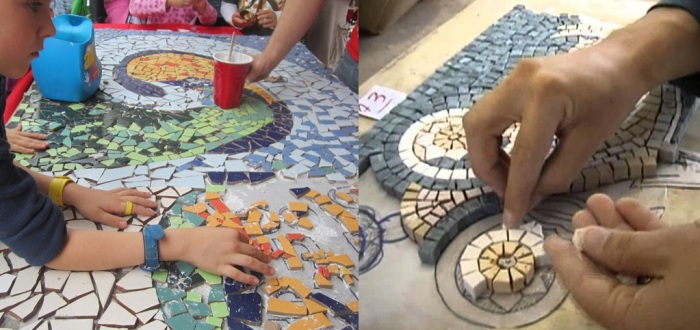
This article is a brief Mozaico review regarding the two techniques being adopted in mosaic artistry that aims to expose you to some of the pros & cons of the two famous methods.
Mosaic is the art of creating a pattern, mainly for decorative purposes, essentially formed by the assemblage and welding of small pieces of marble, stone, glass, enamel or baked clay. There are many different techniques to create a mosaic. Two are the most famous and commonly used mosaic making techniques are: the direct method & the indirect (reverse) method.
- The direct method involves a firm & straight application (gluing process) of the tesserae into the supporting surface. As soon as the glue is entirely dehydrated; grout is applied onto the mosaic artwork to fill in the gaps. The particular technique is mostly suited to be used on 3D small objects with transportable qualities. A strong advantage of direct technique is that allows the artists to have gradual visibility of the progressive result allowing him/her to direct any further modifications on the mosaic. However, the significant downside of this technique is the complexity of creating an even & smooth surface when it comes to surfaces such as a table-top or a floor.
- The indirect method is merely used for large mosaic artworks or for projects with a repetitive element. The process followed with the indirect technique involves face-down application of the tiles with the usage of an adhesive on a support sheet. After the setting paper is gradually soaked off, the grouting process takes place on the front surface. The significant benefit of this method is that the textural finishing of the mosaic results in a smooth surface regardless the thickness and shape of the tiles. Moreover, the artist has the flexibility of assembling the initial design in one location and installing it elsewhere if need be. However following this method generally requires more time and careful handling – as aforementioned it is common practice to create it somewhere and install it elsewhere.